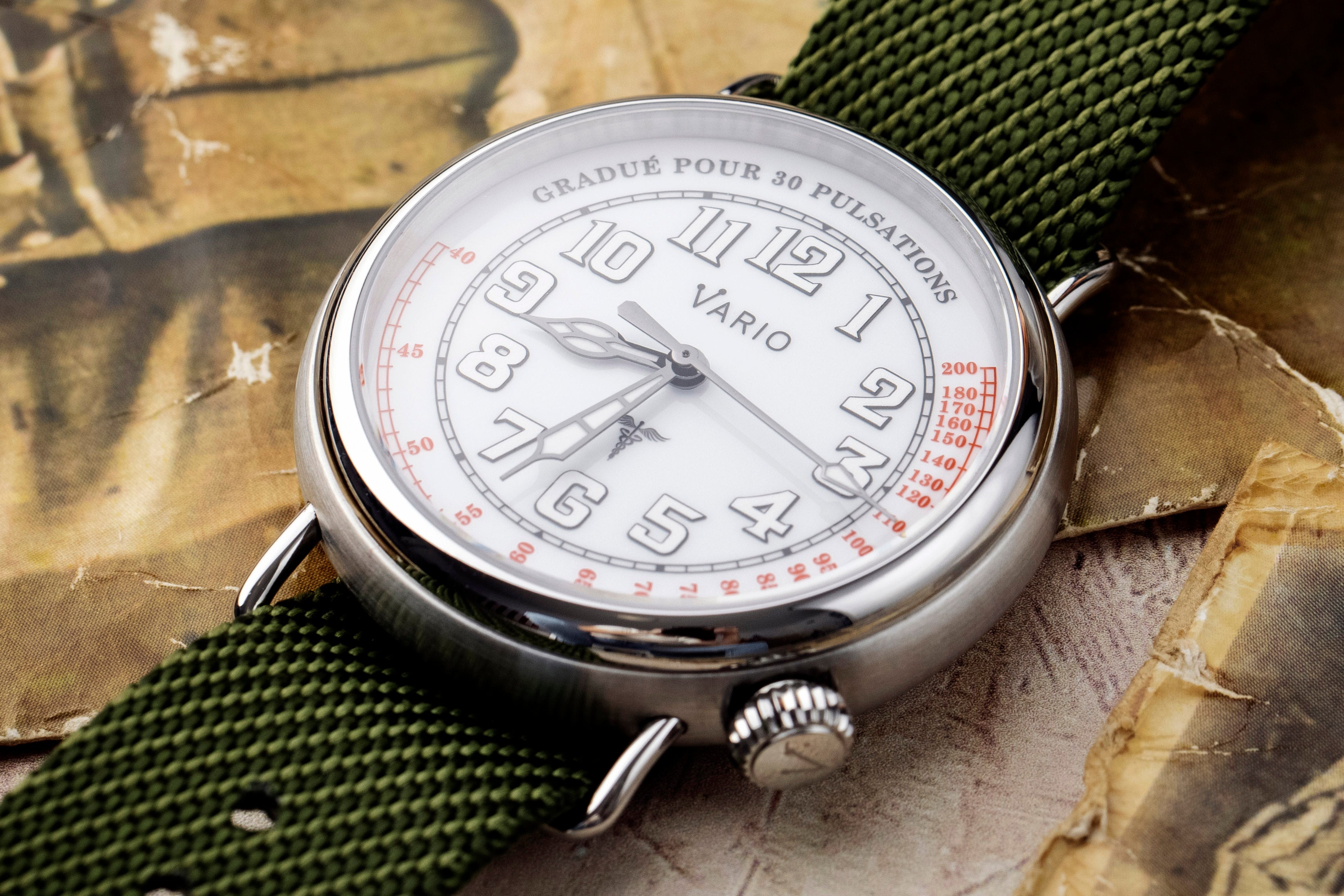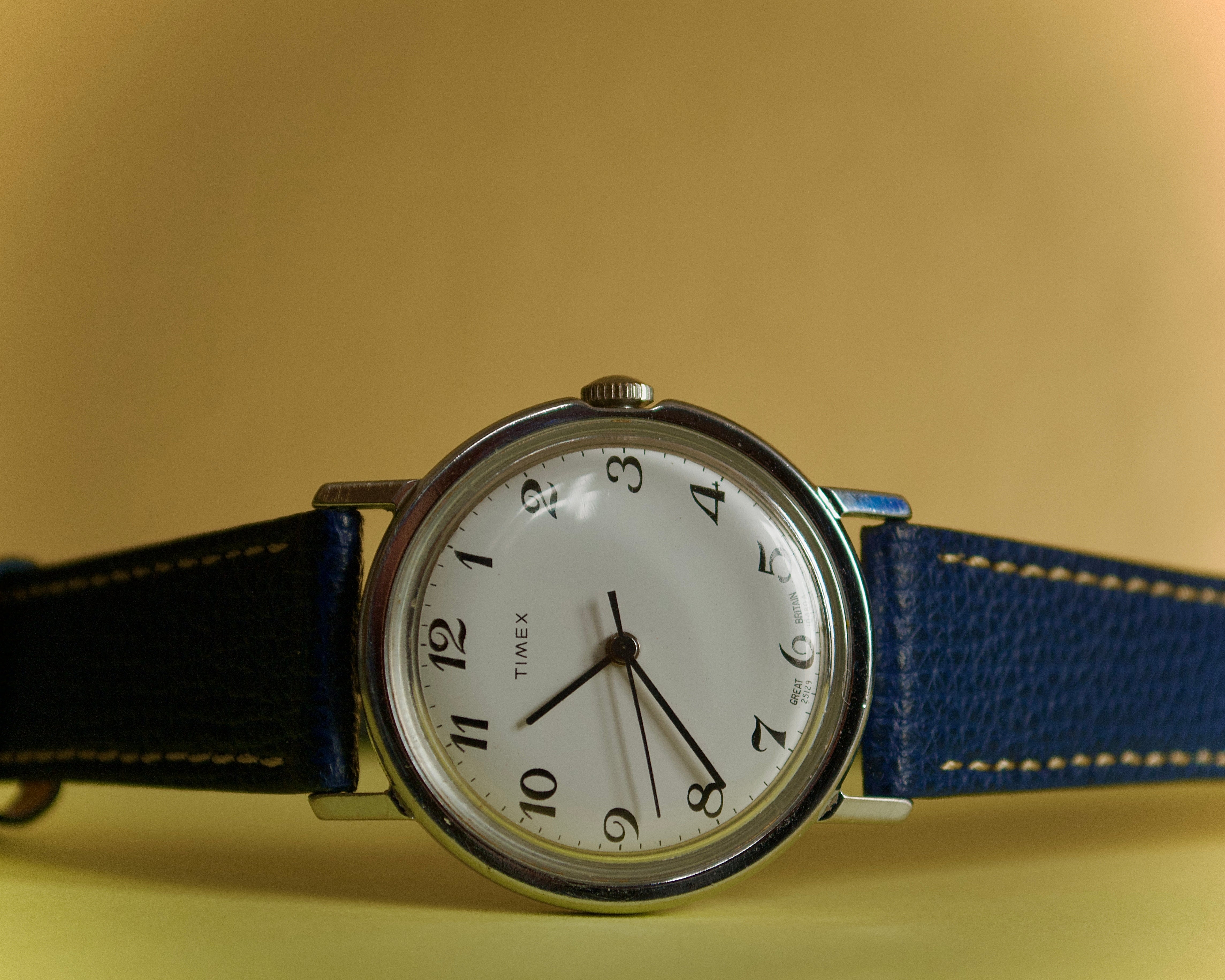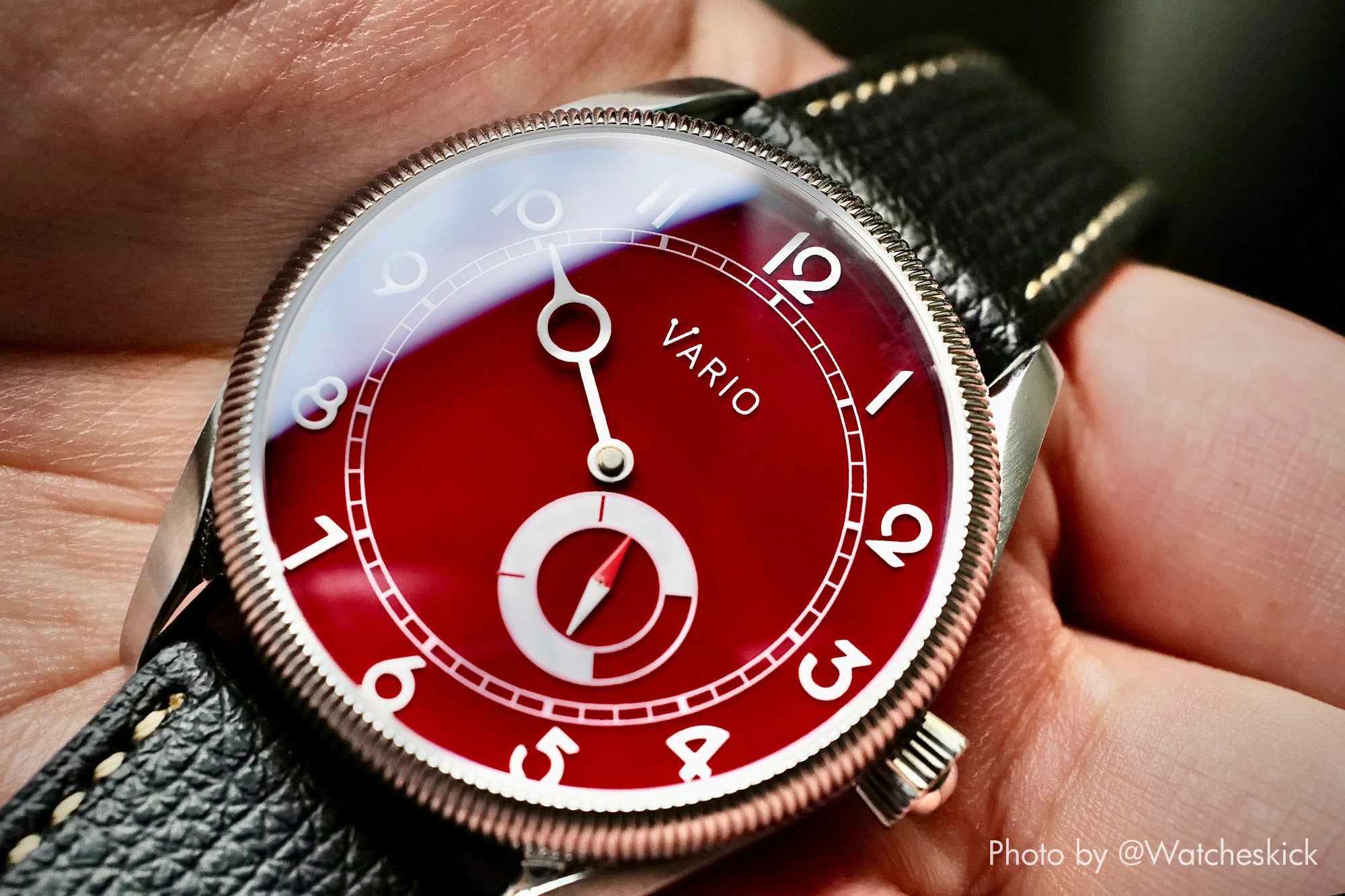
The 1918 Medic Trench | A Watch from an Alternate Timeline
Most WWI-inspired watches aim to recapture the spirit of the era's timepieces. Instead, VARIO's 1918 Medic re-imagines what could have been on the battlefields.

It’s impossible to chart the history of the modern wristwatch while bypassing the events of World War I. The aptly named Trench Watches of that era, mass-produced for soldiers who couldn’t afford and didn’t have the time to open pocket watches as they coordinated operations and fought for their lives, would serve as the blueprint for the mass-production of consumer watches leading into the roaring 20s and decades after.
From the use of large Roman numerals to mark the hours, to the regrettable radium lume that enabled the watches to be read at night, every feature of the Trench watch was purposefully designed. However, there was one feature that was absent from these watches – a feature that could have been a game-changer for a much smaller group within the military.
The Pulsometer Complication
Nowadays, electrical devices such as heart rate monitors make it easy to record a pulse, but prior to the eighteenth century, doctors had no real method of doing this with precision. This all changed in 1707 when physician Sir John Floyer invented the pulsometer or ‘pulse watch’ and published a book on how to use it and interpret its findings. This was, of course, a pocket watch device, as wristlets would not be popularized for some time, and even then, were intended for women’s fashion.
While a regular watch can be used to record the pulse rate, which is measured in the number of beats per minute, a pulsometer allows medical professionals to do this much more accurately and without the need for calculations. Instead of measuring the heart rate for 15 seconds and multiplying this by four, one can instead ensure the seconds-hand or secondary counter is in the 12 position, count 15 or 30 heartbeats (depending on which amount the watch is calibrated for), and once they’re finished, the scale on the outer bezel will display the person’s heart rate.
While Sir Floyer did not invent the seconds-hand, pocket watch, or stopwatch, his use of these existing features to make a portable timekeeping medical device that could be traveled with in lieu of his much larger clocks was still clever. Technology for reading heart rates has evolved, but pulse wristwatches are still a reliable tool that can be used almost anywhere.

The 1918 Medic Trench
The creation of this watch was the result of a simple question – what kind of watch would have been the most useful to those military medics back then? In keeping with the spirit of that time, we chose to keep the elements simple, updating only the quality and durability of the materials used. In the end, the 1918 Medic Trench was born. In some ways, this watch is its own piece of historical fiction, but was very much possible based on the horological advancements that existed at the time.
Watch Dial
We chose a light colour watch dial and red and black design elements to maintain the three dominant colors used by many emergency services, and ensured the Roman numerals for the hour markers were printed large enough to be read at a glance. The pulsometer is the only other dominant element, with rest kept as minimal as possible to reduce distractions and ‘noise’. In the heat of battle, whichever one of these functions a doctor needed to look at could be easily seen, even in the dead of night with the face’s lume coating. We also chose a scale based on 30 heartbeats for increased accuracy.
Modern Upgrades
The modern material upgrades include scratch and shatter-proof double domed sapphire, a 10ATM water-resistant case, non-radioactive Swiss lume, modern enamel, and a robust Japanese automatic movement with hand-winding and hacking seconds. Watch fanatics will recall that prior to WWI, considerations like glass to protect the watch-face elements were not very common, as pocket watches typically had spring covers. This is much more durable than its ancestor would have been.

Iconography
While most associate the Rod of Asclepius iconography with medicine, we ultimately decided on using Caduceus for the 1918 Medic Trench. Belonging to Asclepius, a god of healing and medicine in Greek mythology, the Rod of Asclepius represents all medicinal healing, with one possible interpretation of the serpent and rod being the way physicians deal with life and death. However, this is not a watch for all physicians. In 1902, the U.S. Army Medical Corps mistakenly adopted the Caduceus as their medical symbol, thinking it to be the Rod of Asclepius. Because of this, it has a stronger association with the early 20th-century armed corps, marking the watch as one for military doctors from that era in particular. It is the most accurate symbol for a watch like this.
After all, this is an ode to WWI medics.
For the full collection of 1918 WW1 Trench watch, please visit
https://vario.sg/collections/1918-trench-medic
How the Trench Watch Became the Modern Wristwatch We Know Today
https://vario.sg/pages/how-the-trench-watch-became-the-modern-wristwatch-we-know-today-vario
A Man and his Trench watch
https://vario.sg/pages/a-man-and-his-trench-watch
Story of 1918 WW1 Trench watch
https://vario.sg/pages/ww1-trench-watch
Buying A Microbrand Watch? Here's Everything You Should Know
https://vario.sg/blogs/products/buying-a-microbrand-watch-heres-everything-you-should-know-vario



1 reactie
Are your brass watch cases solid brass or brass plated? Can i order without a strap? What is the cost of the watch? and of shipping to Spain? I’m interested in the brass 1918 with white face and orange numerals.
Dave Dallam
Laat een reactie achter
Deze site wordt beschermd door hCaptcha en het privacybeleid en de servicevoorwaarden van hCaptcha zijn van toepassing.